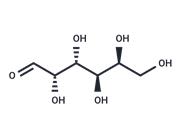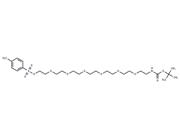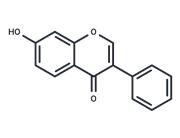| Name | CPPHA |
| Description | CPPHA, a positive allosteric modulator of glutamate receptors mGluR5 and mGluR1, is commonly used in development for central nervous system diseases. |
| Cell Research | CPPHA potentiated the response to a subthreshold concentration of 3,5-dihydroxy-phenylglycine (DHPG) on extracellular signal-regulated protein kinase (ERK) and cyclic-AMP responsive element-binding protein (CREB) activity, as well as N-methyl d-aspartate (NMDA) receptor subunit NR1 phosphorylation in cortical and hippocampal slices [1]. CPPHA potentiated threshold responses to glutamate in fluorometric Ca(2+) assays 7- to 8-fold (EC50s: 400 to 800 nM), and at 10 μM shifted mGluR5 agonist concentration-response curves to glutamate, quisqualate, and DHPG 4- to 7-fold to the left. CPPHA (10 μM) potentiated NMDA receptor currents in hippocampal slices induced by threshold levels of DHPG, whereas having no effect on these currents by itself. Similarly, 10 μM CPPHA also potentiated mGluR5-mediated DHPG-induced depolarization of rat subthalamic nucleus neurons [2]. CPPHA induced an increase in basal mGluR5-mediated ERK1/2 phosphorylation and potentiated the effect of low concentrations of agonists. In contrast, CPPHA significantly decreased ERK1/2 phosphorylation induced by high concentrations of agonists [3]. |
| In vitro | CPPHA potentiated the response to a subthreshold concentration of 3,5-dihydroxy-phenylglycine (DHPG) on extracellular signal-regulated protein kinase (ERK) and cyclic-AMP responsive element-binding protein (CREB) activity, as well as N-methyl d-aspartate (NMDA) receptor subunit NR1 phosphorylation in cortical and hippocampal slices [1]. CPPHA potentiated threshold responses to glutamate in fluorometric Ca(2+) assays 7- to 8-fold (EC50s: 400 to 800 nM), and at 10 μM shifted mGluR5 agonist concentration-response curves to glutamate, quisqualate, and DHPG 4- to 7-fold to the left. CPPHA (10 μM) potentiated NMDA receptor currents in hippocampal slices induced by threshold levels of DHPG, whereas having no effect on these currents by itself. Similarly, 10 μM CPPHA also potentiated mGluR5-mediated DHPG-induced depolarization of rat subthalamic nucleus neurons [2]. CPPHA induced an increase in basal mGluR5-mediated ERK1/2 phosphorylation and potentiated the effect of low concentrations of agonists. In contrast, CPPHA significantly decreased ERK1/2 phosphorylation induced by high concentrations of agonists [3]. |
| Storage | Powder: -20°C for 3 years | In solvent: -80°C for 1 year | Shipping with blue ice. |
| Solubility Information | DMSO : 90.0 mg/mL (221.2 mM), Sonication is recommended.
|
| Keywords | CPPHA |
| Inhibitors Related | IDRA-21 | Topiramate | Decanoic Acid | Urethane | L-Cysteic acid monohydrate | Evans blue | L-Glutamine | Direct Blue 1 | L-Glutamic acid monosodium salt | Piracetam | O-Phospho-L-serine | Memantine hydrochloride |
| Related Compound Libraries | Bioactive Compound Library | Anti-Neurodegenerative Disease Compound Library | Neuronal Signaling Compound Library | Membrane Protein-targeted Compound Library | Bioactive Compounds Library Max |

 United States
United States



